Rainier cherries are a sought-after delicacy known for their distinct golden color and sweet flavor. Originating from the Pacific Northwest region of the United States, these luscious fruits thrive in specific conditions that contribute to their exceptional quality. With their smooth, firm texture and unmistakable taste, Rainier cherries have established themselves as a favorite among fruit enthusiasts. Exploring the unique geographical conditions that foster the growth of these exquisite cherries unveils a fascinating tale of agricultural mastery and natural abundance. In this article, you will delve into the captivating world of Rainier cherries, discovering the precise locations where they flourish and the factors that contribute to their unparalleled allure.
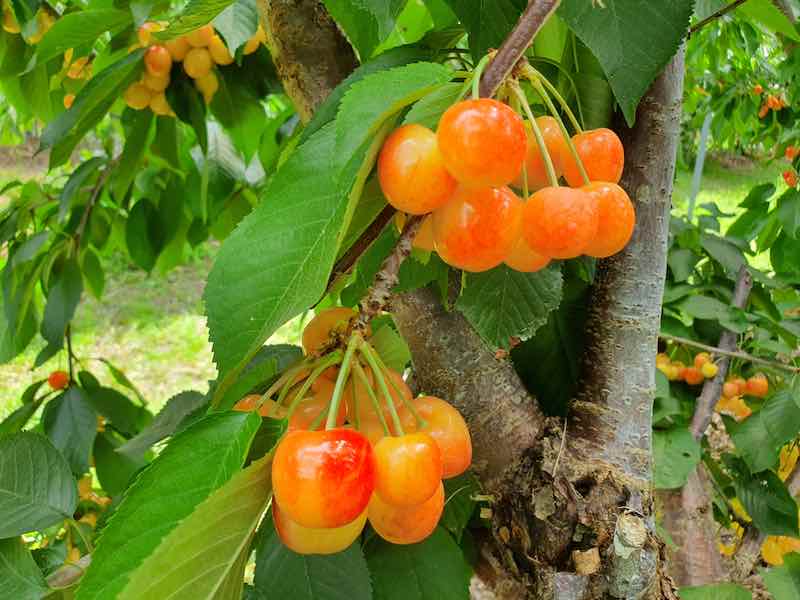
Rainier Cherry Overview
Rainier cherries are a popular and highly sought-after variety of sweet cherries, known for their unique taste and beautiful appearance. These cherries are named after Mount Rainier in Washington state, where they were first developed and cultivated. With their golden yellow skin and vibrant red blush, Rainier cherries are easily recognizable and often considered the crown jewel of cherries.
Identification
Rainier cherries are characterized by their large size and distinct coloring. They have a golden yellow skin, often with a red blush that covers up to 50% of the fruit surface. The cherries have a heart-shaped silhouette and are typically round or slightly elongated. The flesh of Rainier cherries is firm and juicy, with a delicate and sweet flavor that is less acidic than other cherry varieties.
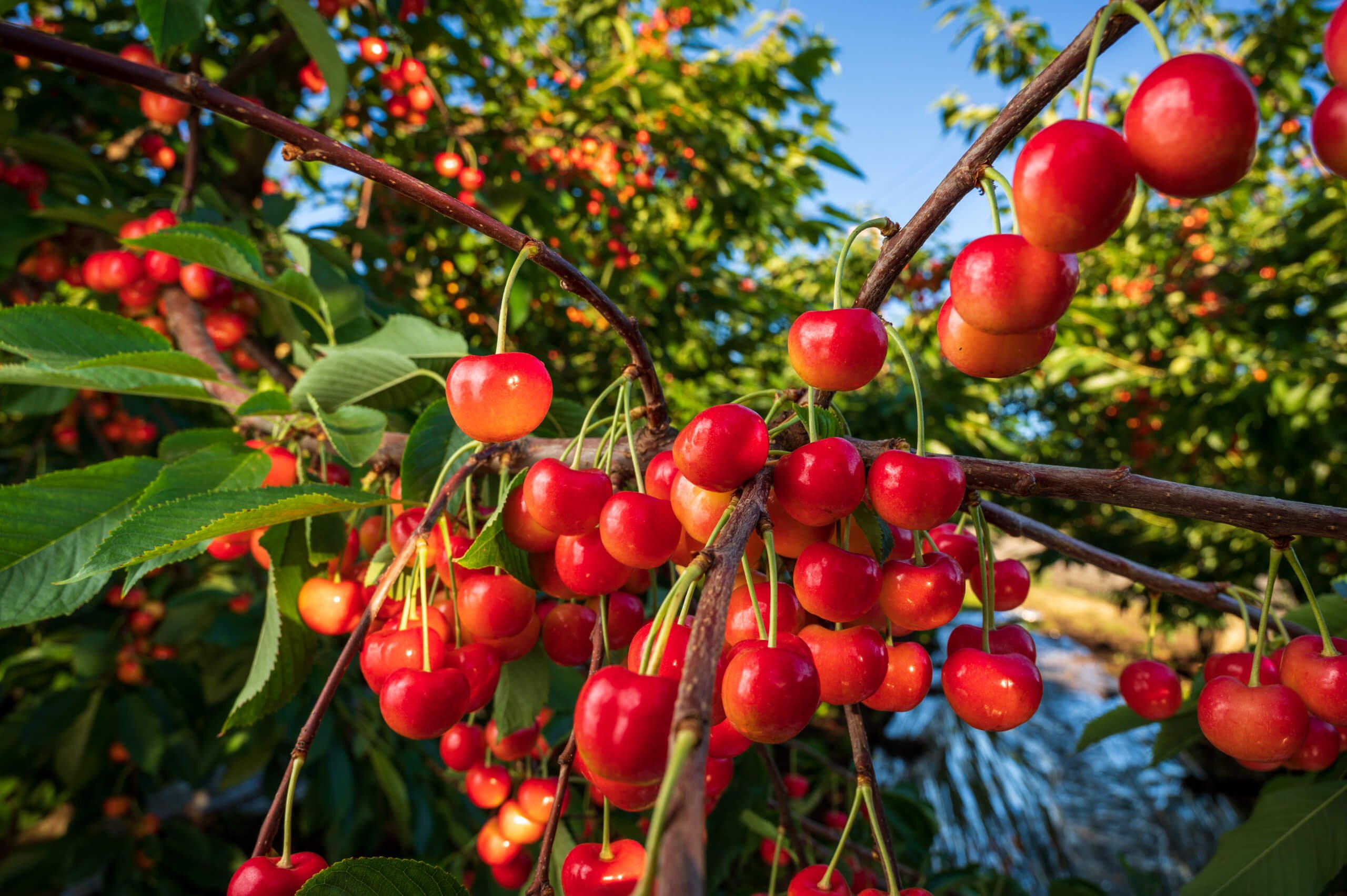
Taste and Appearance
Rainier cherries are renowned for their exceptional taste, which is often described as being exceptionally sweet and slightly tart. The cherries have a delicate flavor profile with notes of honey, vanilla, and citrus, making them a delight to the taste buds. Their juicy flesh offers a satisfying burst of refreshing sweetness, making Rainier cherries a popular choice for snacking and enjoying fresh.
In terms of appearance, Rainier cherries are simply stunning. Their golden yellow skin, combined with the vibrant red blush, creates a striking contrast that is visually appealing. The cherries are often displayed as a centerpiece in fruit bowls or used as an attractive garnish in various culinary creations. Their beauty adds an element of elegance to any dish or dessert they are incorporated into.
Origin and History
Breeding and Development
The development and cultivation of Rainier cherries can be traced back to Dr. Harold Fogle, a pioneering horticulturist at Washington State University’s Tree Fruit Research and Extension Center. In the late 1950s, Dr. Fogle embarked on a breeding program with the goal of creating a cherry variety that combined desirable traits from two existing varieties – the Bing cherry and the Van cherry.
After several years of cross-pollination and selective breeding, Dr. Fogle successfully developed the Rainier cherry in 1960. The new variety was named after Mount Rainier, the iconic landmark of Washington state. It was cherished for its exceptional taste, beauty, and distinct characteristics that set it apart from other cherry varieties.
Introduction to Market
Rainier cherries were introduced to the market in the early 1970s, when commercial production began on a larger scale. The cherries quickly gained popularity among consumers due to their unique taste and stunning appearance. Today, Rainier cherries are highly regarded in the fruit industry and are widely available in markets and grocery stores during their peak season.
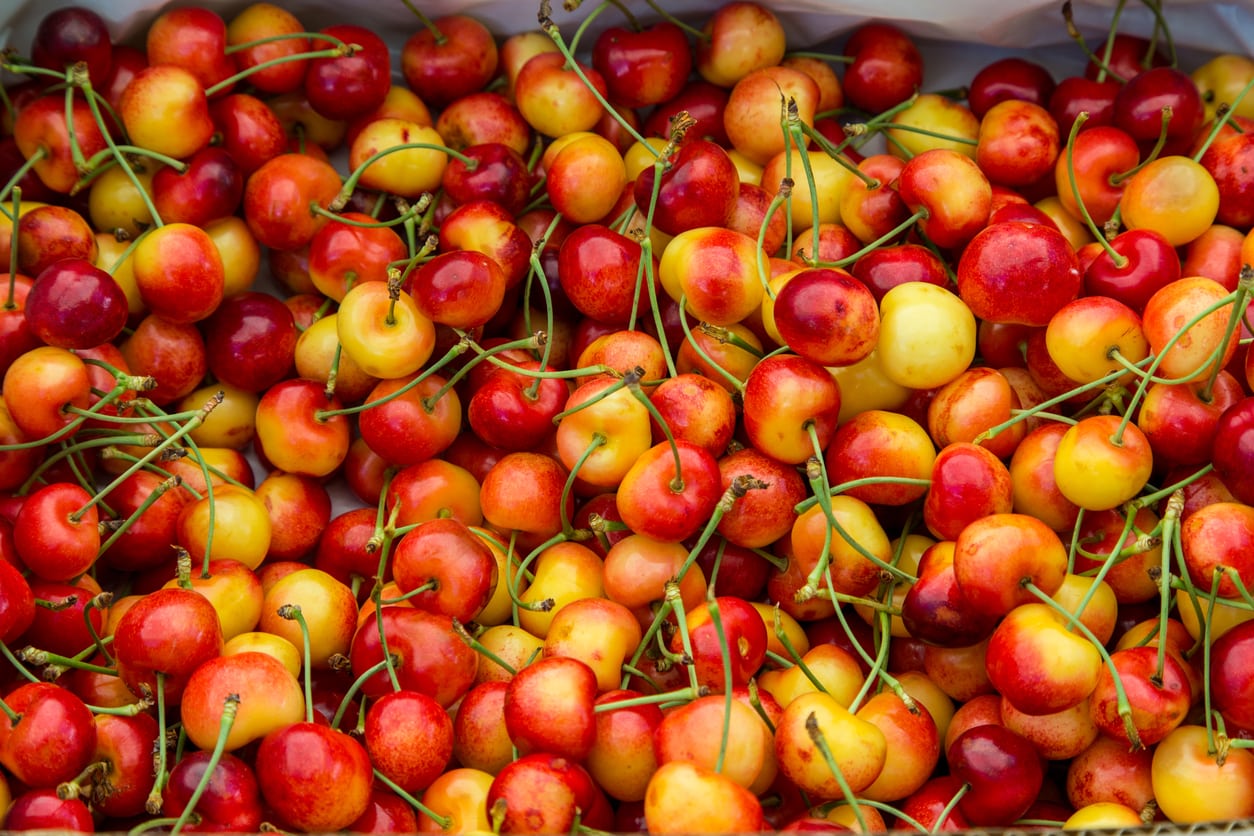
Climatic Requirements
Ideal Growing Zones
Rainier cherries thrive in specific climatic conditions, and their cultivation is limited to regions that meet their ideal growing requirements. These cherries are known for their preference for cooler climates, where they can receive sufficient chilling hours during winter and moderate temperatures during the growing season. The ideal zones for growing Rainier cherries are characterized by mild winters and warm summers.
In the United States, the Pacific Northwest is the primary region for Rainier cherry production. The areas around Washington state, Oregon, and Idaho provide the ideal climate and environmental conditions for these cherries to flourish. Internationally, Rainier cherries are also grown in Central and Eastern Europe, as well as in Australia and New Zealand.
Temperature Range
Rainier cherries require a specific temperature range for optimal growth and fruit development. They thrive in regions where the temperatures during the growing season range between 70°F to 85°F (21°C to 29°C). However, they can tolerate temperatures as low as 32°F (0°C) during the dormant period in winter.
High temperatures during the growing season can negatively impact the quality and flavor of Rainier cherries. Excessive heat can cause heat stress, sunburn on the fruit, and a reduction in sugar content. Therefore, it is crucial to ensure that the temperatures remain within the optimal range to obtain the best possible crop.
Chilling Hours
Chilling hours play a vital role in the successful cultivation of Rainier cherries. These cherries require a certain period of cold exposure during their dormant stage in winter to break bud dormancy and promote robust flowering and fruit set. Chilling hours refer to the cumulative number of hours that temperatures remain between 32°F and 45°F (0°C to 7°C) during the dormant period.
Rainier cherries typically require around 800 to 1,200 chilling hours to ensure proper fruit development and yield. The accumulation of sufficient chilling hours is essential for the cherries to break dormancy and enter the subsequent stages of growth and fruit production.
Major Cultivation Regions
Pacific Northwest – United States
The Pacific Northwest region of the United States, encompassing areas such as Washington state, Oregon, and Idaho, is the primary cultivation region for Rainier cherries. This region offers ideal climatic conditions, including mild winters, cool springs, and warm summers, which are crucial for the successful growth of these cherries.
The volcanic soils found in this area provide excellent drainage and fertility, creating an optimal environment for cherry orchards. The combination of the region’s climate, soil composition, and expertise in cherry cultivation has made the Pacific Northwest a renowned producer of Rainier cherries.
Central and Eastern Europe
Rainier cherries are also cultivated in several countries in Central and Eastern Europe. Countries like Germany, Austria, Hungary, and the Czech Republic have suitable climates and growing conditions for these cherries. These regions often experience cool and temperate climates, which favor the successful cultivation of Rainier cherries.
The cultivation of Rainier cherries in these European countries has gained momentum in recent years due to increasing demand and recognition of the unique qualities and flavors of these cherries. They are often grown in small to medium-sized orchards, with a focus on quality rather than quantity.
Australia and New Zealand
Australia and New Zealand have also emerged as significant cultivation regions for Rainier cherries. The temperate climate and fertile soils found in certain parts of these countries provide favorable conditions for growing these cherries.
Tasmania, in particular, has gained recognition for its high-quality Rainier cherries. The cool and mild maritime climate, along with the volcanic soils, creates an ideal environment for cherry cultivation. The cherries produced in these regions are known for their exceptional taste and premium quality.
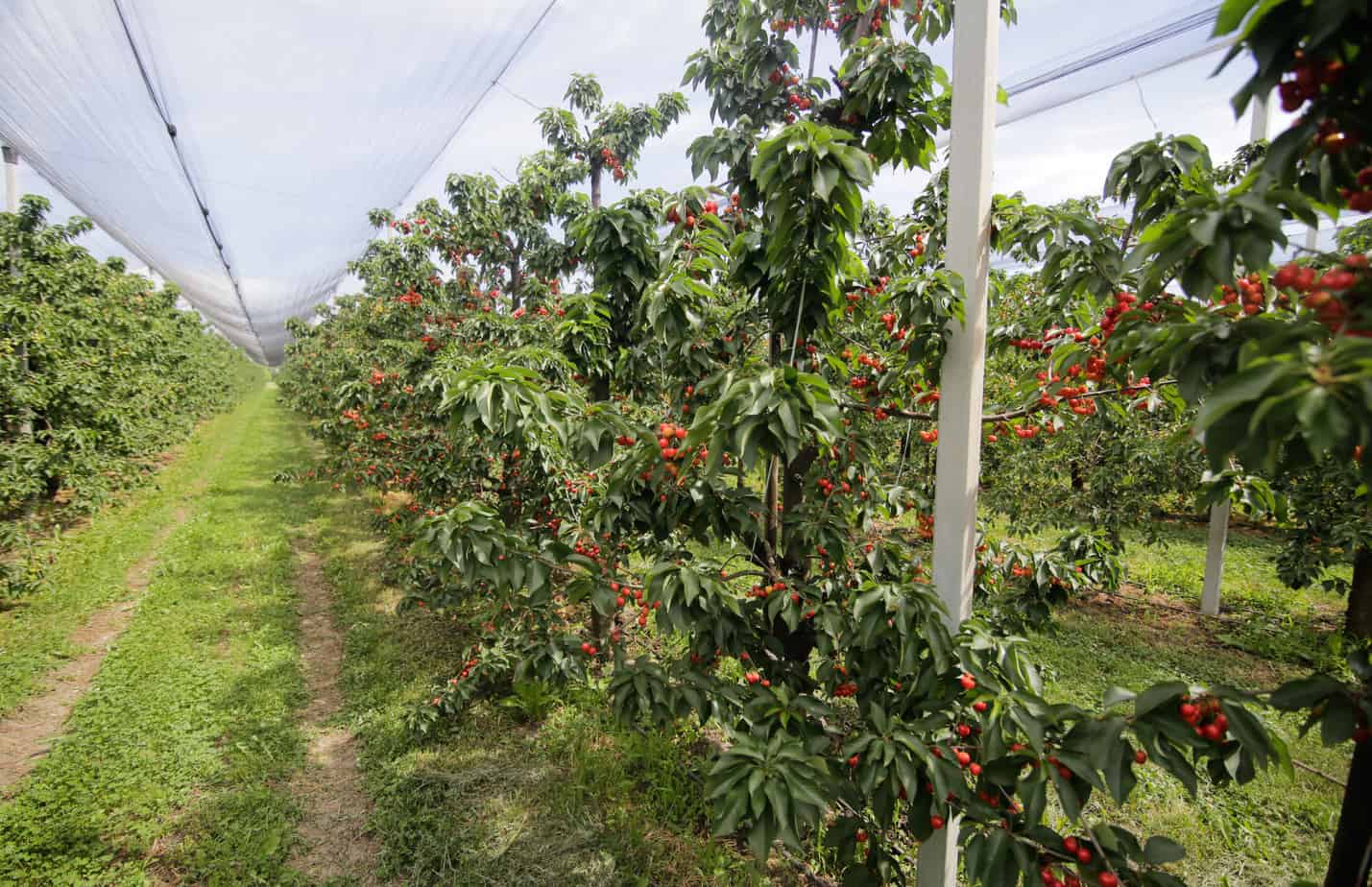
Geographical Distribution
North America
In North America, Rainier cherry cultivation is most prevalent in the Pacific Northwest region of the United States. Washington state, in particular, is renowned for its vast orchards of Rainier cherries. These cherries are grown in various counties across the state, including Yakima, Wenatchee, and Okanogan.
Rainier cherries are also grown in other parts of the United States, albeit on a smaller scale. Orchards can be found in states such as Oregon, Idaho, California, and Michigan, although production levels are not as significant as in Washington state.
Europe
In Europe, Rainier cherries are primarily cultivated in Central and Eastern European countries. Germany, Austria, Hungary, and the Czech Republic are among the main producers of these cherries in Europe. These countries offer suitable climates and growing conditions that allow Rainier cherries to thrive.
In addition to these countries, other European regions such as Switzerland, France, and Italy also cultivate Rainier cherries, although to a lesser extent. The availability of these cherries may vary depending on the region and the local market demand.
Australia and Oceania
Rainier cherry cultivation in Australia and Oceania is centered around regions with suitable climates and growing conditions. Tasmania, known for its cherry orchards, has gained recognition for its premium Rainier cherries. Other regions in Australia, such as Victoria and New South Wales, also cultivate these cherries.
In New Zealand, the cultivation of Rainier cherries is concentrated in areas with cool and temperate climates. Regions such as Central Otago and Hawke’s Bay have established orchards dedicated to growing these cherries. The cherries produced in these regions are renowned for their superior quality and taste.
Growing Practices
Soil Requirements
Rainier cherries thrive in well-drained soils with good fertility. They require soil with a neutral to slightly acidic pH ranging from 6.0 to 7.0. The soil should have a high organic matter content to retain moisture and provide essential nutrients to the trees.
Ideally, the soil should be loamy, with good water-holding capacity and adequate aeration. Sandy soils can be suitable if they are properly amended to improve fertility and water-retaining abilities. Proper soil management, including regular soil testing and the addition of organic matter, is crucial for maintaining optimal soil conditions for Rainier cherry trees.
Pollination and Planting
Rainier cherries are classified as self-unfruitful, which means they require cross-pollination with another compatible cherry variety for successful fruit production. Bees play a crucial role in facilitating pollination, carrying pollen from the male flowers of one tree to the female flowers of another.
To ensure adequate cross-pollination, it is essential to plant compatible cherry varieties within close proximity in the orchard. Commonly used pollinizer varieties for Rainier cherries include Bing, Lapins, and Black Tartarian. The recommended ratio is one pollinizer tree for every five Rainier cherry trees.
When planting Rainier cherry trees, it is important to consider orchard layout, spacing, and sunlight exposure. The trees should be spaced adequately to allow for good air circulation and light penetration. Planting in rows with sufficient spacing between trees and careful consideration of the tree’s orientation can contribute to optimal growth and fruiting.
Pruning and Training
Proper pruning and training are crucial components of Rainier cherry tree management. Pruning helps maintain tree structure, balance vegetative growth with fruiting, and improve overall fruit quality. It also promotes good light penetration and airflow within the tree canopy, reducing the risk of disease and pest problems.
Pruning should be done during the dormant season, preferably in late winter or early spring. It involves removing dead or diseased wood, thinning crowded branches, and shaping the tree to encourage an open canopy structure. Regular pruning helps manage the tree’s height, shape, and overall vigor, facilitating easier harvesting and better fruit production.
Training Rainier cherry trees involves establishing a strong central leader and well-spaced lateral branches. Various training systems can be used, such as the central leader system or the open vase system, depending on the grower’s preference and specific orchard conditions. Training young trees in their early years helps establish a strong framework that supports future growth and fruit production.
Pest and Disease Management
Rainier cherry trees can be vulnerable to various pests and diseases, which can impact fruit quality and yield. Common pests that affect cherry trees include cherry fruit flies, aphids, mites, and caterpillars. Disease issues may arise from fungal infections, such as cherry leaf spot, brown rot, or powdery mildew.
Implementing an integrated pest management (IPM) approach is essential for effective pest and disease management. This approach combines cultural practices, biological controls, and targeted chemical applications to minimize the use of pesticides while maintaining optimum tree health.
Regular monitoring of the orchard, timely pest and disease identification, and appropriate preventive measures are essential components of an effective IPM program. This helps minimize the risk of significant pest and disease outbreaks, ensuring healthy tree growth and high-quality fruit production.
Harvesting and Storage
Rainier cherries are typically hand-picked when they reach optimal maturity and flavor. The timing of the harvest is critical to ensure a balance between sweetness and firmness. Harvesting too early can result in cherries that are underripe with a lower sugar content, while waiting too long can lead to overripe cherries that are prone to bruising and damage.
The cherries should be harvested by gently twisting the fruit to detach it from the stem. Care should be taken to avoid bruising or damaging the cherries during the harvesting process. It is important to handle Rainier cherries delicately, as their tender flesh is susceptible to bruising and may affect their quality and shelf life.
After harvest, Rainier cherries are stored under controlled conditions to maintain their freshness and quality. They are usually chilled to a specific temperature and stored in coolers or cold rooms. This helps slow down the ripening process and extends the shelf life of the cherries, allowing for a longer marketing period and wider availability to consumers.
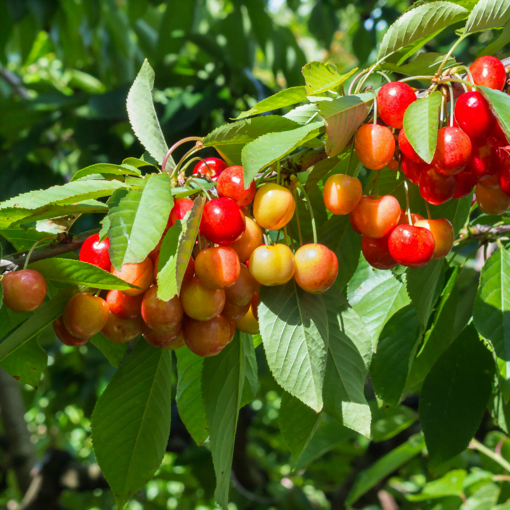
Commercial Production
Yield and Market Demand
Rainier cherries are known to have relatively lower yields compared to other cherry varieties. A mature Rainier cherry tree can produce approximately 60 to 80 pounds (27 to 36 kilograms) of fruit per year. This lower yield is partly due to the larger size of the cherries, which reduces the overall fruit count per pound.
Despite the lower yields, there is a strong market demand for Rainier cherries due to their exceptional taste and unique appearance. Consumers are willing to pay a premium price for these cherries, making them a valuable commodity in the fruit industry. The high demand and limited supply contribute to their perceived rarity and desirability.
Rainier Cherry Producers
Rainier cherries are primarily produced by commercial growers in the Pacific Northwest region of the United States. Washington state accounts for a significant portion of Rainier cherry production, with orchards located in various counties such as Yakima, Wenatchee, and Okanogan. Oregon and Idaho also have smaller-scale cherry production, including Rainier cherries.
In Europe, countries such as Germany, Austria, Hungary, and the Czech Republic have established orchards dedicated to Rainier cherry cultivation. Australia, particularly Tasmania, is also recognized for its premium Rainier cherries. New Zealand, with its cool climate regions like Central Otago and Hawke’s Bay, contributes to the global production of Rainier cherries.
Culinary Uses
Fresh Consumption
Rainier cherries are highly prized for their exceptional flavor and are often enjoyed fresh as a delicious and healthy snack. Their sweet and juicy flesh makes them a refreshing choice during the summer months. The cherries can be eaten on their own or combined with other fruits to create colorful and flavorful fruit salads.
Baking and Desserts
Rainier cherries are also wonderful for baking and incorporating into various desserts. They can be used in pies, tarts, cakes, and crumbles, adding a touch of sweetness and vibrant color to these treats. The cherries’ delicate flavor and tender texture make them an excellent choice for flavorful fillings and toppings.
Preserves and Jams
The exceptional taste of Rainier cherries makes them ideal for preserving and turning into jams, jellies, and preserves. The cherries’ sweetness, combined with their natural acidity, creates a perfect balance of flavors that can be captured in a jar. Rainier cherry preserves can be enjoyed spread on toast, scones, or used as a filling in pastries and cakes.
Beverages
Rainier cherries can also be used to create delicious and refreshing beverages. They can be juiced to make cherry juice or blended into smoothies for a burst of natural sweetness. Additionally, Rainier cherries can be used in cocktails, adding a touch of elegance and vibrant color to drinks.
Health and Nutritional Benefits
Vitamins and Minerals
Rainier cherries offer a range of essential vitamins and minerals, making them a nutritious addition to one’s diet. They are a good source of vitamin C, which is known for its immune-boosting properties and its role in collagen synthesis. Rainier cherries also contain vitamin A, potassium, and dietary fiber, which contribute to overall health and well-being.
Antioxidant Properties
Cherries, including Rainier cherries, are rich in antioxidants, which help protect the body against the damaging effects of free radicals. These antioxidants, including anthocyanins and flavonoids, have been linked to various health benefits, such as reducing inflammation, supporting heart health, and potentially preventing certain chronic diseases.
Potential Health Benefits
Consuming Rainier cherries as part of a balanced diet may offer several potential health benefits. Some studies suggest that cherries, including Rainier cherries, may have anti-inflammatory effects, which can help alleviate symptoms of arthritis and other inflammatory conditions. The high-fiber content of cherries may also aid in digestion and contribute to a healthy gut.
However, more research is needed to fully understand the specific health benefits of Rainier cherries and to determine the dosages required to achieve these effects. As with any dietary changes or additions, it is important to consult a healthcare professional for personalized advice.
Varieties and Availability
Rainier Cherry Varieties
Rainier cherries are known for being a variety in their own right and are not typically classified into distinct cultivars. However, there may be slight variations in terms of fruit size, color, and flavor within Rainier cherries grown in different regions or orchards.
Rainier cherries are prized for their consistent quality and distinct characteristics, making them readily identifiable regardless of minor variations. Consumers can expect the same delightful taste and appearance when purchasing Rainier cherries.
Seasonal Availability
Rainier cherries have a relatively short growing season, typically harvested in late spring to early summer. The exact timing of their availability may vary slightly depending on the specific region and local climate conditions. In the Pacific Northwest region of the United States, Rainier cherries are typically available from mid-June to early July.
Due to their limited availability and high demand, Rainier cherries are often considered a specialty fruit and may be more expensive than other cherry varieties. However, their exceptional taste and unique qualities make them a worthwhile indulgence during their short season.
In conclusion, Rainier cherries are a prized variety of sweet cherries known for their unique taste, beautiful appearance, and limited availability. They were developed through selective breeding and first introduced to the market in the 1970s. Rainier cherries thrive in cooler climates and are primarily grown in the Pacific Northwest region of the United States, Central and Eastern Europe, and Australia and New Zealand. They require specific climatic conditions, including mild winters, cool springs, and warm summers, along with adequate chilling hours. Proper growing practices, including soil management, pollination, pruning, and disease management, are essential for successful Rainier cherry cultivation. These cherries are highly valued for their culinary uses, health benefits, and seasonal availability. Despite their lower yields, Rainier cherries remain a sought-after fruit among consumers, symbolizing the epitome of sweetness and elegance.



